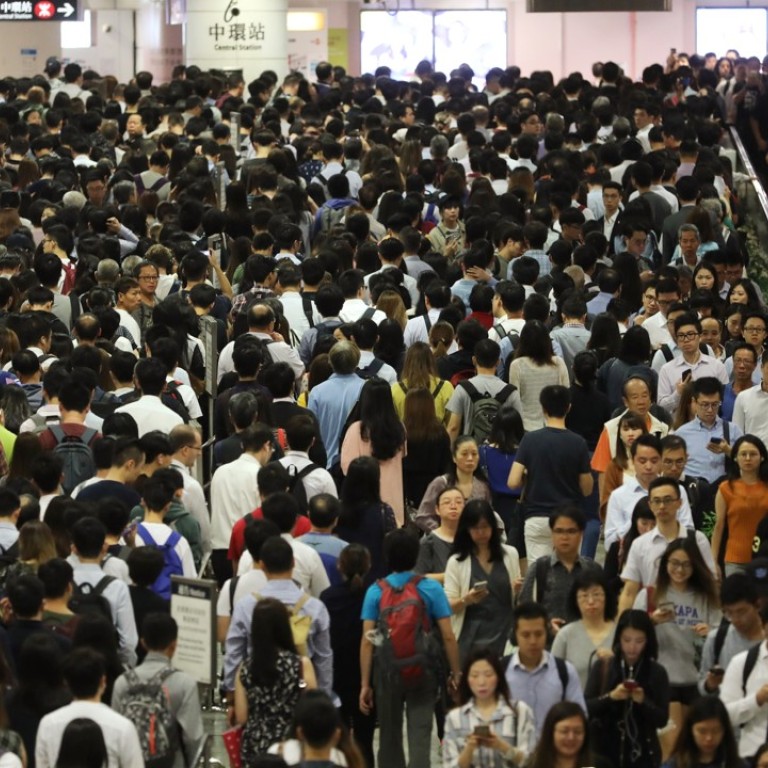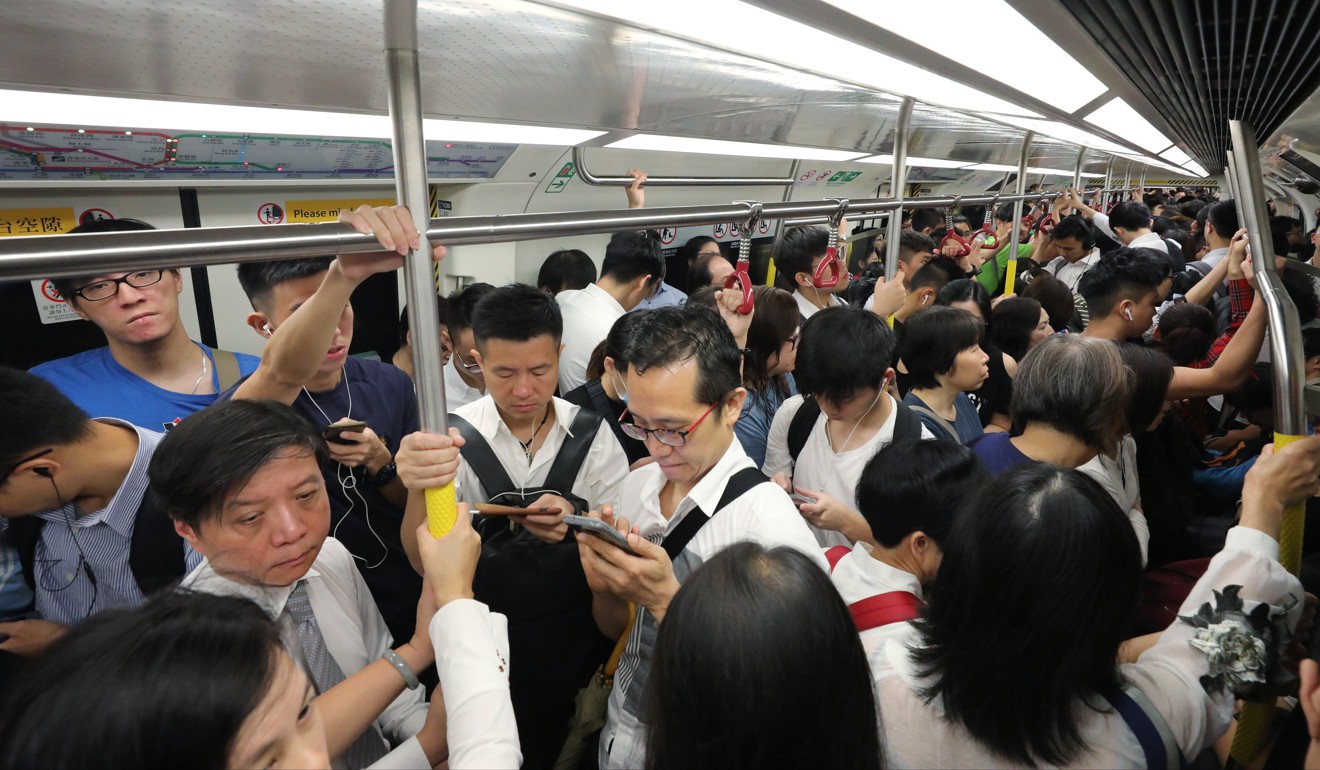
Hong Kong public cries out for answers after latest chaos on the MTR
For the second time in a month, rail commuters have been caught up in transport havoc with a signalling fault being blamed for crippling train services on four lines
Outrage was to be expected when Hong Kong’s train services suffered their worst ever breakdown. For the first time, four rail lines were disrupted during morning rush hour yesterday, unlike in mid-September when transport havoc caused by Typhoon Mangkhut was mainly confined to the New Territories.
Thankfully, services in the latest incident largely resumed following six hours of disruption, but commuters were still told to allow extra time during evening peak hours. The MTR Corporation must investigate the matter thoroughly and avoid a repeat of similar problems.
The images of commuters struggling to get to work were familiar ones. With just one-fifth of the normal services maintained at one time, the chaos can be imagined. People were forced to use buses, trams, minibuses and taxis, clogging up tunnels and almost everywhere else.
An initial investigation has identified a signalling fault that forced a switch to manual operations. This led to a slowdown in services and reduced operating frequencies.
The rail operator had warned two years ago of possible ongoing delays to morning services when it announced a series of overnight tests for an upgrade of the entire signalling system. But the scale of the latest disruption was beyond expectations.
It was such an unprecedented scenario that there is nothing in the maintenance handbook to deal with it. A senior executive said detailed investigations were needed to ascertain whether the breakdown was related to the tests.
Whatever the reasons, the disruption was unacceptable, and it is incumbent upon the management to get down to the root of the problem and fix it.

Currently, the MTR handles millions of trips across the city each day, and with such dominance comes huge responsibility. Whenever the railway cannot run smoothly, the knock-on effects are significant. The chaos underlines our dependence on the train system.
With travel advice just fingertips away on smartphones, commuters ought to have been able to have followed the situation across the city instantly and made adjustments to their journeys accordingly.
But an apparent lack of coordination with other transport operators and delayed communication of the latest information meant many were still stuck on roads as train services gradually resumed.
As with its rail system, the reputation of the MTR Corp as a world-class operator is also increasingly being put to the test. While the public may now need to be prepared for more frequent service disruptions, it rightly expects better backup plans.
Regrettably, the contingency response still leaves a lot to be desired and complaints of confusing arrangements abound. The MTR has again offered concession fares in the near future as compensation but, more importantly, it should strive to provide more reliable services.

